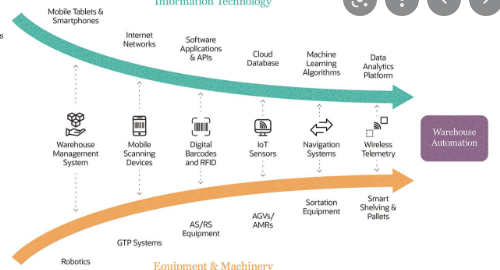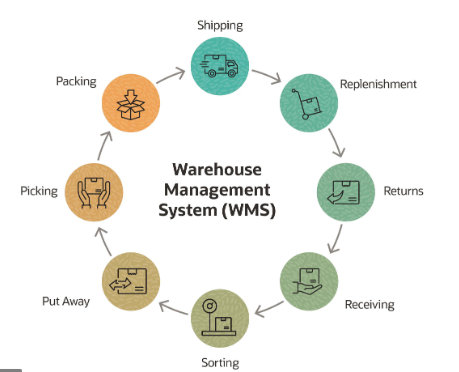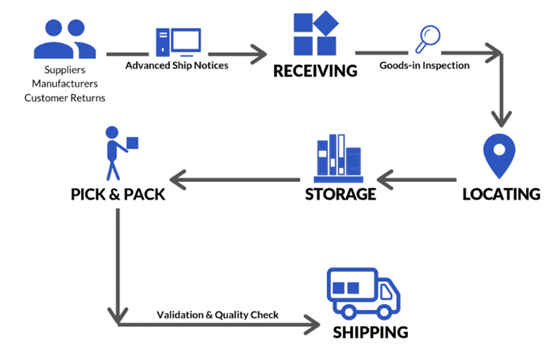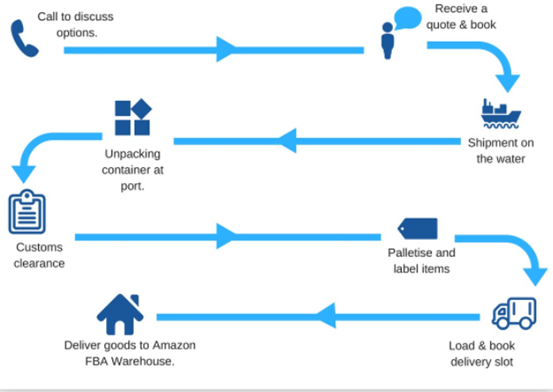5 Star Rating
Orders Deliver
PhD Experts
Support
Privacy
Top Quality
Number Of View : 92
Download : 0
Pages: 9
Words : 2125

Technology has transformed the sector significantly. Cloud computing is a big advancement in the technique that has radically transformed how businesses operate. Over the years, we've seen a slew of new technologies driven by cloud computing emerge. The cloud and successful cloud utilisation have been the focus of technological advancement. These innovations are not only altering the cloud computing platform, but they are also altering the computing industry as a whole. Only a few years ago, numerous industry experts rejected cloud computing as little more than the newest technology craze, ideal for creating a lot of excitement but with little practical benefit. The cloud has evolved, and academics and businesses alike see it as a major factor in drastically transforming the whole IT environment, by how data centres are constructed to how technology is distributed to how changes are managed, and even beyond. Because of the critical role that IT plays in technology in the modern business setting, cloud technology is radically affecting the way work. Virtualized technologies, services, and even architectural are being used by millions of organisations of all kinds and occupations to streamline operations, decrease IT complexity, and boost productivity. Many industry experts once dismissed cloud services as nothing more than the latest technology fad, perfect for creating a lot of buzz but lacking in detail. Cloud computing has shown to be little more than a contributions to the success. In actuality, cloud computing is poised for much greater expansion, on top of the incredible achievements this has made to date.. Almost a fourth of businesses already utilise cloud-based apps, and more than ten percent plan to do so in the future1. The increase is considerably more noticeable when measured in dollars: Revenue from global cloud storage was $46.4 billion in 2008; in 2013, it really is predicted to exceed $1.1 trillion, a 225 percent increase. 2 The cloud computing revolution is well underway (Saravanan, et al., 2018.).
Containers gained to prominence at a time when'speed of delivery or intricacy' were critical factors in the IT sector. Unlike traditional Virtualization Technology (VMs), which hold this same main operating system, Package general purpose technology as a powerful software product method, in which a carton package transports a bit of code and also its bare necessities (libraries and system settings) across multiple computing surroundings. The IT industry was battling at the time with crucial hardware management and software deployment. Serverless computing addressed these issues by taking care of crucial management and scalability requirements for businesses, allowing them to concentrate on other critical activities in their cloud-based systems. Dealing with the a single huge program is a thing of the past! The trend in software development has already been componentization. Microservices describes the process of splitting down a larger program into smaller modules or parts in ability to implement faster. Homogeneous apps are broken down into small, connected services or components using an appropriate software. This modular design makes it simple for various small teams to provide different components independently of the 'bulk' program. This allows for the continual supply of completely latest software, which shortens the app release cycle (Chukkapalli, et al., 2020).
Mobile gadgets, such as tablets and phones, are becoming increasingly attractive to employers. While being confined to their workstations in a workplace, today ’s employees can operate from almost anywhere using their handheld apps. One of the main reasons cloud computing will be on the increase is the flexibility expected by the digital workplace. Cloud-based programs' anytime, anyplace access is great for individuals who are constantly on the move. So instead of having to come into the office to utilise their personal Computers, personnel can just log into a browser user's mobile device or tablets and complete their work in the cloud.The ease and production benefits of employing smartphone cloud computing tools to manage company data are becoming increasingly apparent. The cloud has already been worldwide in many ways—after all, firms all around the world use cloud-based solutions on a daily basis. However, as cloud computing advance, they will enable increasing levels of coordination and teamwork among businesses of all sizes. In fact, this means that more technologies will be able to work effortlessly across many places by incorporating local features such as multi-currency banking tools and inter displays, among several other things(Castaneda, et al., 2015).
The cloud is already worldwide in many ways—after all, firms all around the world use cloud-based solutions on a daily basis. Furthermore, as cloud computing advance, they will enable increasing levels of coordination and teamwork among businesses of all sizes. In fact, this means that more systems will indeed be able to work effortlessly across several places by incorporating local features such as multi-currency banking capabilities and number of co interfaces, along with other things.
Artificial Intelligence would be the next disruptive technology that will change the way we look at technologies. AI is gaining market share among existing systems thanks to its solution that demonstrate advanced algorithms without the need for human intervention.
For many businesses, though, developing AI applications is difficult. This is when the cloud comes in handy. Computer science and some other deep learning tools are being considered by these businesses. Cloud-based AI is becoming the most sought-after alternative for organisations of all sizes in achieving their AI initiatives due to its extensive processing and storage choices. Supply chain firms expect machines technology in major supply chain processes double and within next five months, so according Gartner. Meanwhile, according to a recent report, spending on Interoperable Systems will grow from $1.67 billion in 2018 to $12.44 billion in 2024, reflecting a 40% annual increase (Cag) over the next seven years. As extensive distribution systems get increasingly intricate, the margin for error is rapidly shrinking. With increased competition in a connected online realm, it was more critical than before to boost productivity and reduces risks of all kinds. The industry's need to utilise the internet is highlighted by the increasing demands of extraordinary speeds and efficiency among all kinds of clients and providers.
Automated processes are defined as the management of cargo handling into, throughout, and out of warehousing with minimal human interaction. As part of an automation programme, a company can eliminate labor-intensive operations such as repeated backbreaking labor, automated procedures, and analytics. For illustration, a walmart employee might load bulky items onto an automated driving. The robot moves items from one end of a facility to the other, while software monitors its movement and keeping essential records on paper. These robots drive growth, efficiency, trustworthiness, and accuracy in the task. Digital automated testing has various benefits, including the ability to integrate with Enterprise systems, improved security, greater information administration effectiveness, reduced operation and potential consequences, and increased effectiveness. It also avoids silly mistakes in warehousing by reducing manual operations. AIDC equipment, such as rfid tags (RFID) in combination with mobility tracking system, can increase employment levels, enhance customer happiness, and reduce cost connected with social errors.

Warehouse automation uses information systems such as processors and scanners to streamline procedures. These items can be combined with other tools, such as inventory management.
Warehouse automation guarantees that company procedures are in line with client demands. It all starts with a database system (WMS), which automates manual data processing, along with inventories access control analysis. Those systems work in tandem with other technologies to control and automate processes across a variety of company ’s supply chain activities. Cloud-based apps are not only more adaptable than on-premise software, but they can also be more sociable. What is the significance of this? Users nowadays expect social technologies like chat and weblog to help them collaborate more effectively. Clients will need to utilise these tools to connect with coworkers, customers, and opportunities so that they become more acquainted to them—and begin to favour these to "conventional" methods like email. Cloud computing will become even more social, and it will become a fundamental component of how strategic plan data. Expect this feature to evolve quickly considering cloud computing is naturally web-based and improvements are immediately rolled out now to cloud solutions on a regular basis.Most supply chain managers struggle to build an end-to-end strategy for planning successful supply - chain accountancy, particularly as globalisation, expanded product ranges, increased complexity, and variable consumer demand become more common. The lack of thorough knowledge into current model ranges owing to unplanned incidents, manufacturing outages, or transport challenges makes this task much more challenging. A smart building supply chain network consists of several goods, replacements, and critical components, that are all necessary for relying on the performance(Kostrzewski, et al., 2020).

The Internet of Things has provided the technological trend a new structure. What we're seeing now are fitness monitors in the form of wristwatches, smart houses, identity cars, and so more. These operations generate enormous amounts of information. How would you handle this information? Cloud computing is really the answer for many enterprises. Cloud-based data analytics solutions with excitable servers make data processing easier. Another important concern about IoT setup is whether or not it is cost-effective and complicated to develop from start. Another key trend that has given the cloud services ecosystem a boost. DevOps mentality brought united various teams with varied areas of expertise and made them work toward a common objective through creating linkages. Developers write code, while network operators track data. They may work a treat in a software configuration, offering businesses a competitive advantage. DevOps technologies and resources, as well as cybersecurity integration such as DevSecOps, making it even more unique! Warehouses are mostly in charge of refilling returned merchandise. According to research, online networking business fosters impulse purchases, with 20% of online shoppers returning items. Transportation is used in this situation. Technology recovers inventories after returned things are dumped off at a storage. Without even a question, advanced grid is assisting businesses in meeting the needs of consumers who suffer from buyer's remorse, anticipate consistent delivery, but have a low tolerance for errors (Castaneda, et al. 2015).

Implementing a complete AI solution may appear onerous and expensive, and expenses can reach from hundreds to billions of dollars, determined by the size of either the company. Before integrating AI solutions, businesses must first complete a thorough digitalisation operation and then execute an analytics programme. Companies frequently squander considerable costs in this process by failing to include end customer feedback and then having to go back to fix unanticipated issues.While deploying an full AI solution may appear daunting and expensive, with expenditures ranging from millions through thousands of dollars, AI is already transforming the production process and revolutionising inventory system. Don't panic if your company hasn't started its technological change and you're just feeling left alone: computer vision is still in its early stages, and AI will not go away. That's not to imply you need wait for AI to reach its full potential before investigating its application in your company. Rather, use the procedures outlined above to assess your industry's digital preparedness. That activity should help you decide what to do next. Depending on the organization's size. Before implementing an analytics programme, organizations must first complete a thorough digitization process.
These potential developments demonstrate the importance of the Cloud Computing system to the IT sector, both now and in the coming. Cloud-based apps are not only more adaptable than on-premise software, but they can also be more sociable. What is the significance of this? Users nowadays expect social technologies like chat and microblogging to help them collaborate more effectively. Clients will need to utilise these tools to connect with coworkers, users, and customers as they become increasingly accustomed to them—and begin to tend to favour these to "conventional" methods like email. Cloud computing will become even more social, and this will be a fundamental component of how businesses manage information. Because cloud technology is built on the web, improvements are automatically added to cloud systems on a regular basis.
Saravanan, K. and Subhamathi, V., 2018. A panoramic view on the types of management information systems (MIS). International Journal of Research in Management & Social Science, 6(1), p.1.
Chukkapalli, S.S.L., Mittal, S., Gupta, M., Abdelsalam, M., Joshi, A., Sandhu, R. and Joshi, K., 2020. Ontologies and artificial intelligence systems for the cooperative smart farming ecosystem. IEEE Access, 8, pp.164045-164064.
Castaneda, C., Nalley, K., Mannion, C., Bhattacharyya, P., Blake, P., Pecora, A., Goy, A. and Suh, K.S., 2015. Clinical decision support systems for improving diagnostic accuracy and achieving precision medicine. Journal of clinical bioinformatics, 5(1), pp.1-16.
Kostrzewski, M., Varjan, P. and Gnap, J., 2020. Solutions dedicated to internal logistics 4.0. In Sustainable Logistics and Production in Industry 4.0 (pp. 243-262). Springer, Cham.
Manogaran, G., Thota, C., Lopez, D., Vijayakumar, V., Abbas, K.M. and Sundarsekar, R., 2017. Big data knowledge system in healthcare. In Internet of things and big data technologies for next generation healthcare (pp. 133-157). Springer, Cham.
Limitless Amendments
$09.50 free
Bibliography
$10.50 free
Outline
$05.00 free
Title page
$07.50 free
Formatting
$07.50 free
Plagiarism Report
$10.00 free
Get all these features for $50.00
Enter your email, and we shall get back to you in an hour.